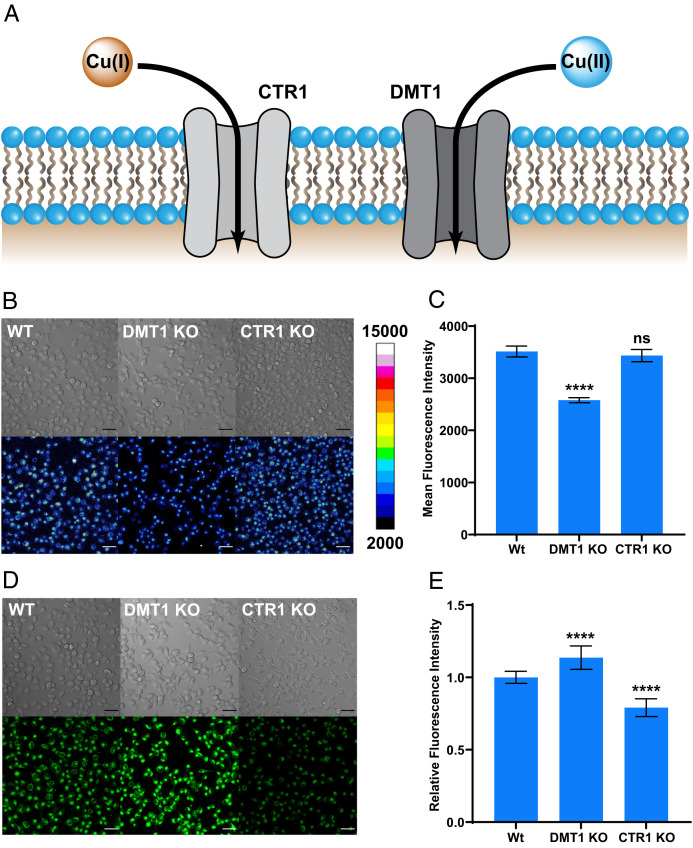Fig. 2.
Live-cell imaging with CD649.2 identifies DMT1 as a copper transporter with selectivity for Cu(II), while the Cu(I)-specific fluorescent sensor CF4 identifies CTR1 but not DMT1 as a Cu(I)-selective importer. (A) Model for oxidation state-selective copper nutrient uptake pathways, where CTR1 mediates Cu(I) uptake and DMT1 mediates Cu(II) uptake. (B) Confocal fluorescence microscopy images comparing WT H1299 cells with genetic knockout of DMT1 (DMT1 KO) or CTR1 (CTR1 KO). Cells were then washed once with HBSS, incubated with CD649.2 for 30 min, washed once with HBSS, and then imaged. (C) Average cellular fluorescence intensity of CD649.2 determined in ImageJ, showing a decrease in fluorescence signal for DMT1 KO but no significant changes for CTR1 KO. (D) Confocal fluorescence microscopy images of H1299 WT, DMT1 KO, and CTR1 KO cells stained with CF4. Cells were washed once with HBSS (+Ca, Mg), incubated with 1 µM CF4 in HBSS (+Ca, Mg) for 30 min, and then imaged. (E) Average cellular fluorescence intensity of CF4 determined in ImageJ, showing a decrease in fluorescence signal for CTR1 KO versus WT and a slight increase in signal for DMT1 KO versus WT. Fluorescence intensity of CD649.2 and CF4 was determined from experiments performed in triplicate with λex = 633 nm for CD649.2 and λex = 488 nm for CF4. Error bars denote SD (n = 12). Scale bar = 50 μm. *P < 0.05, **P < 0.01, ***P < 0.001, and ****P < 0.0001; ns, not statistically significant.

